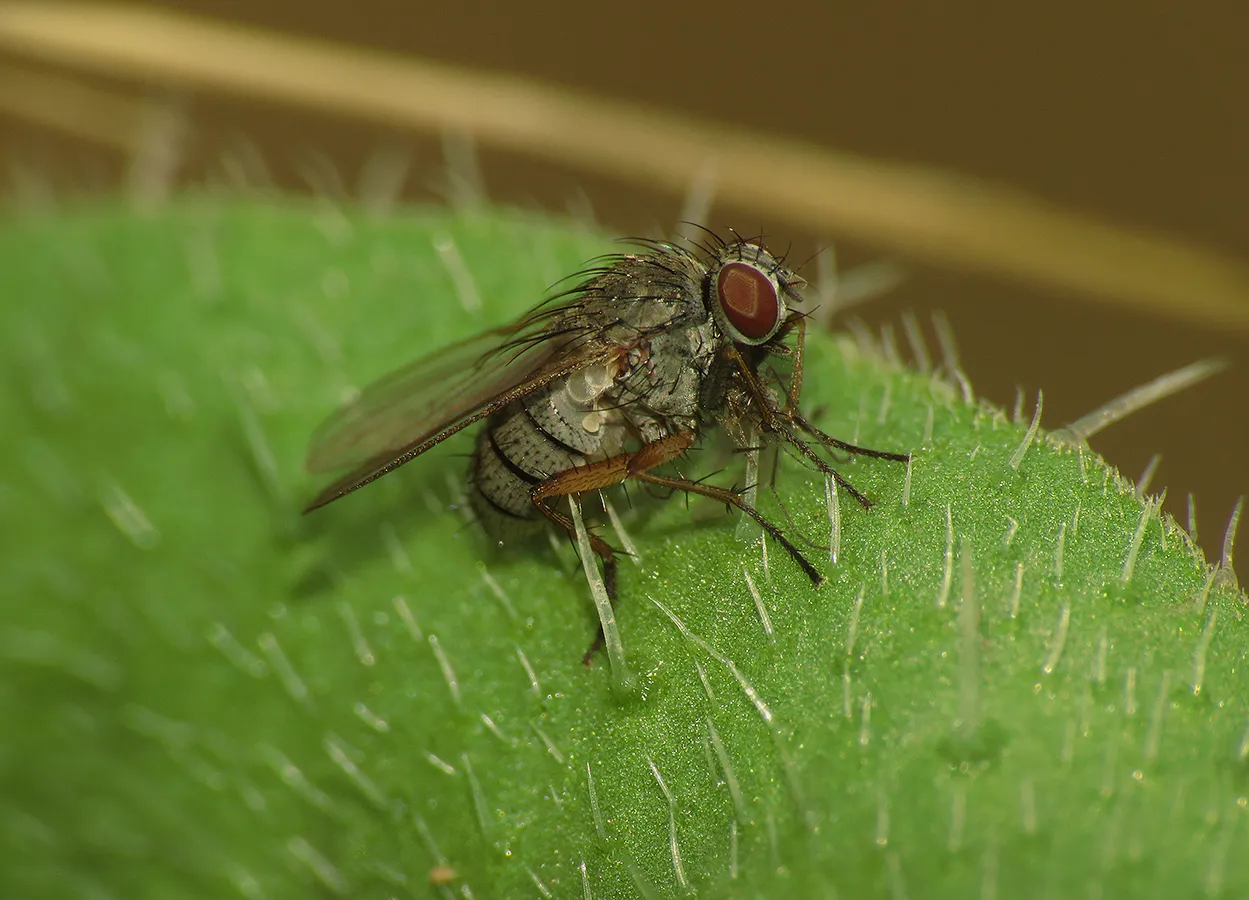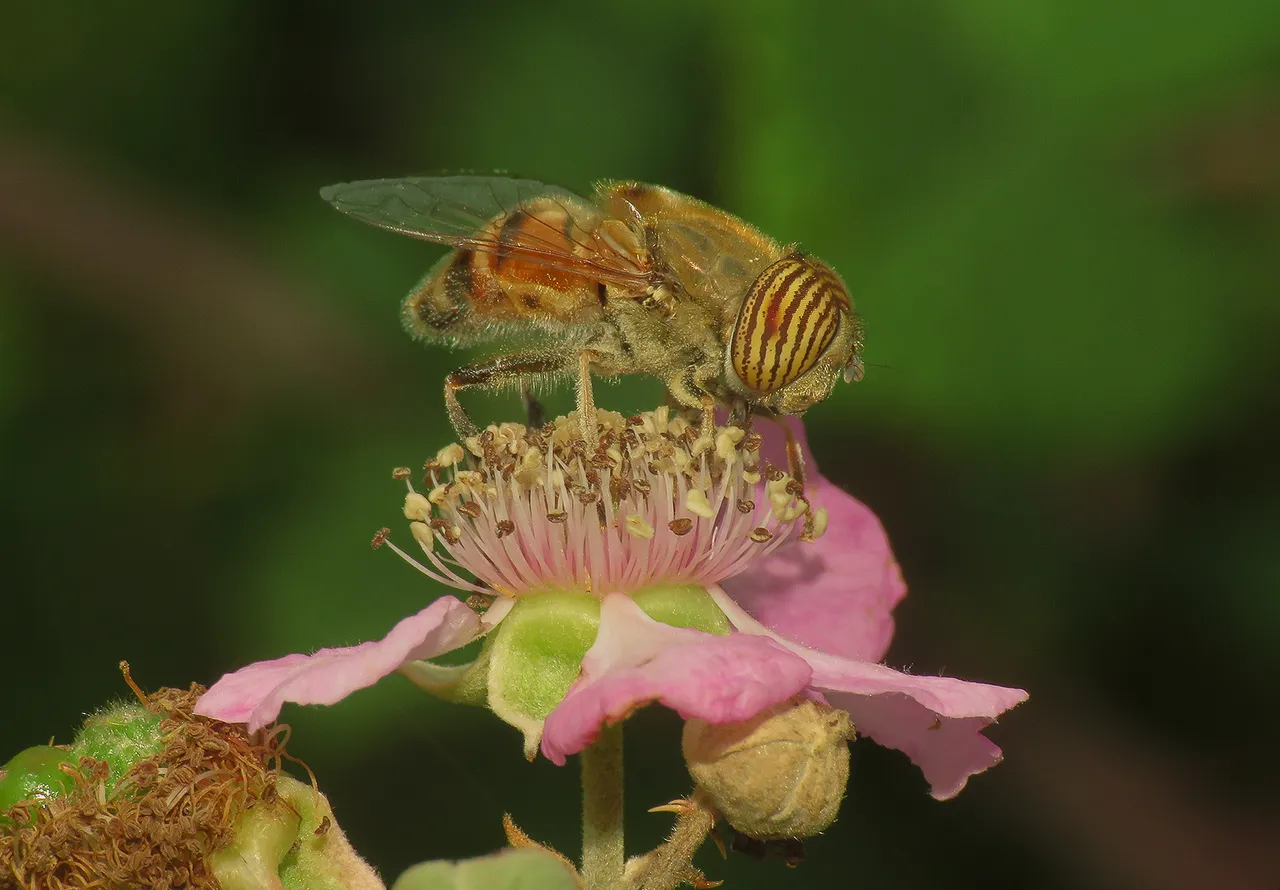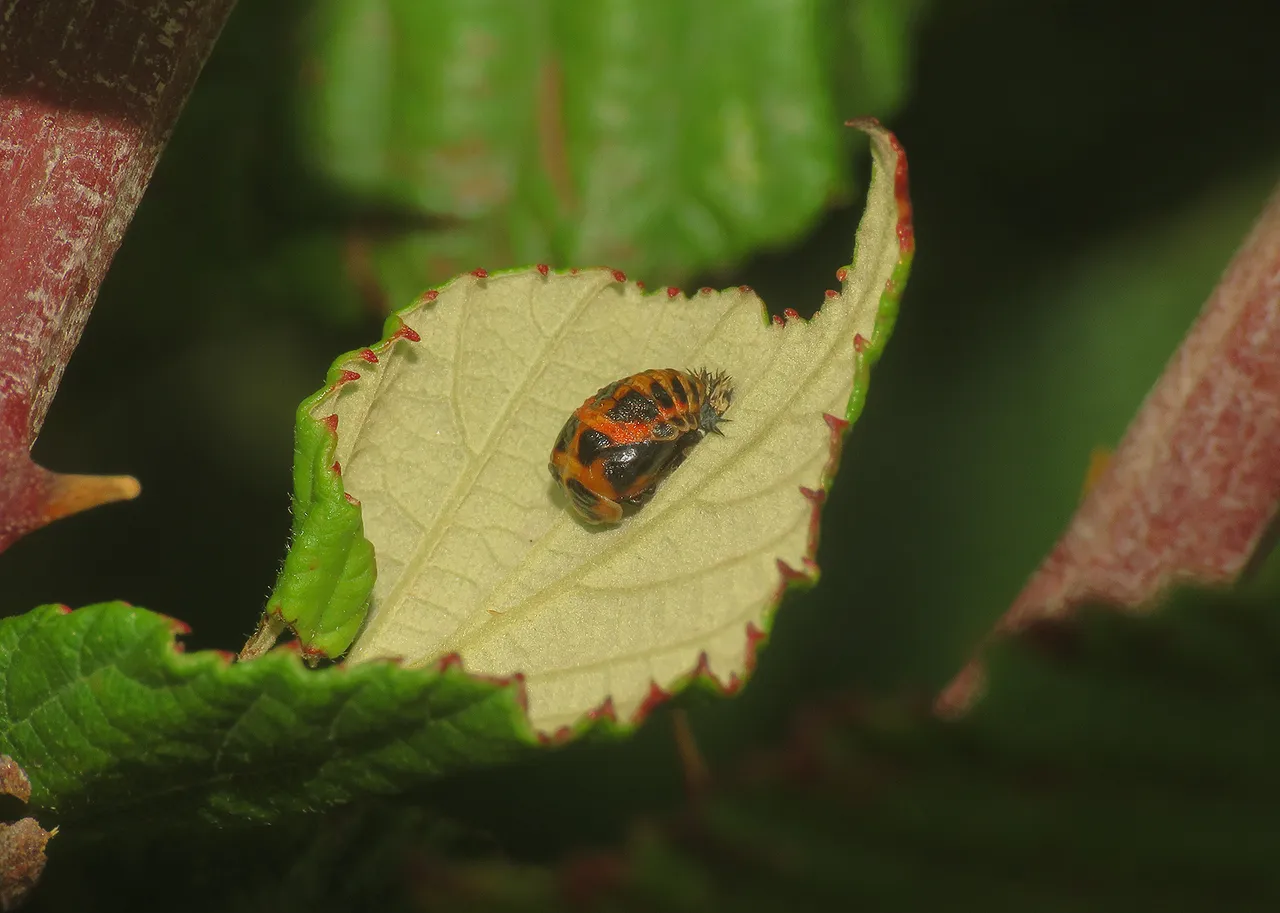The end of the month was cloudy but warm so I found quite a few cool insects and one inconspicuous but interesting spider for the series's finale. This won't be some kind of grand finale, that's for sure, just an ordinary, modest ending but that's still more than I expected since with the progress of autumn toward winter the small arthropod activities usually tend to visibly diminish from day to day.
Before entering the macro mode, let's hear the intro, a few words prepared by your favorite author prone to cursing and offending, about Marlera, the place in which the entire series is set.
Well, Marlera, my dear friends and lovely others is a coastal area situated a couple of kilometers from the village of Liznjan and about five or six kilometers from where I live. Have a good viewing.
This is the Leptotes pirithous, a butterfly from the Lycaenidae family and the main protagonist of this post.
I mean, I photographed this species more than any other on the 31 of October.
Most Leptotes pirithous I saw on that occasion had more or less damaged, washed-out wings. In the following photograph ...
... you can see one whose wings are in better condition.
The Rubus ulmifolius shrubs form thorny barriers in many places across Marlera, especially by the sides of unpaved roads that lead through the area.
I saw many of those shrubs on the stretch of road near the abandoned quarry, a stretch of road I walked back and forth many times on the last day of October but I found only two small clusters of flower buds and flowers. More than half of today's episode revolves around those few flowers.

At one point, on one of the flowers shown in the previous photograph, I found a Syrphid fly I don't remember seeing before. Its most interesting feature was a pair of big, quite decorative eyes.
Here you can see the same fly from an angle that reveals more details of its external anatomy. Besides the iconic striped eyes, everything else looks like the stuff you can see on many bee-mimicking flies from the genus Eristalis of the Syrphidae family.
This fly belongs to the genus Eristalinus of the same family. The name of the species is Eristalinus taeniops.
In this photograph, you can see a Leptotes pirithous butterfly caught in a pose that makes him resemble some kind of flower with four petals. The center of the following shot ...

... was made interesting by the red abdomen of the bee that landed on the flower to get a bit of nectar.
I don't know what species this is. It looks like something from the Halictidae family.
This is the Stomorhina lunata, a fly from the Rhiniidae family. In the following photograph ...

... another fly of the same kind is cleaning its feet and mouth after feeding.
Here you can see the Stomorhina lunata fly approaching a flower on which the Leptotes pirithous butterfly is sucking the nectar.
Here you can see two Leptotes pirithous butterflies sharing the same flower.
In these two shots, you can see the same butterfly posing with spread and folded wings. The washed-out upper surface of its wings is only in small part covered with glittery blue scales. When the wings are in pristine condition most of the upper surface is shiny blue.
Sometimes while photographing one insect, you can accidentally capture another one too. In this case, a small wasp, probably from the Eulophidae family, entered the scene. I noticed it only a few days later when I transferred the images from the camera to the computer.
The little thing, shown in this shot ...
... was photographed on the Rubus ulmifolius shrub with no fresh flowers to offer.

It's a ladybeetle pupa. An adult Harmonia axyridis ladybeetle will soon come out of it. The pupa was attached to the lower surface of the leaf.

Here you can see a fly posing on the upper surface of another leaf on the same shrub. I can't tell you the name of the species but I'm fairly sure that it belongs to the Muscidae family. Please take into consideration that I could be wrong here.
This spider from the Thomisidae family was also resting on the upper surface. I mean, on the upper surface of another leaf, a meter or two from the fly.

I took three photographs, and then ...

... the spider went into hiding on the opposite surface of the same leaf. The name of the species is Xysticus cristatus.

Here you can see a grasshopper posing on the Rubus ulmifolius shrub.

Aiolopus strepens is the name of this species from the large Acrididae family. Aiolopus strepens already appeared in this series, in two or three episodes, at least.
Here you can see a green mantis well-camouflaged on the green foliage of the shrub. The insect is so well-camouflaged that I decided to use nine yellow letters which can help you find the mantis in the prevalently green picture.
It's a Europan mantis, scientifically known as Mantis religiosa.

From a distance, the mantis was almost impossible to notice.
On the Rubus ulmifolius flowers, about ten centimeters from the mantis, the Leptotes pirithous butterfly was enjoying the nectar.

I wasn't able to identify this fly that was resting on the large and hairy leaf of the Echium italicum plant that grows among the low herbaceous vegetation between the wall of shrubs and the dusty, unpaved road.

I can't tell you the name of the species but it looks like it could belong to Anthomyiidae or Muscidae family.
It was an exciting macro encounter becouse never before did I see this or any other similar fly holding and eating its prey. In this case, the prey looks like a tiny fungus gnat or something similar.
This leaf beetle, the Longitarsus exoletus from the Chrysomelidae family, was chewing the juicy tissue of the nearby Verbascum undulatum plant. The beetle is posing on the edge of a large leaf in this photograph.
On another leaf of the same plant, a saw fungus gnats mating. I can't tell you the name of this species but I can confidently say that it belongs to the Sciaridae family. You can also see the Trochulus hispidus, a snail from the Hygromiidae family, in the lower left corner of the shot.

This photograph, which shows the same scene in ambient light, reveals the beautiful color visible from a certain angle on the gnat's wings.
In this set of four photographs, you can see the Leptotes pirithous butterfly feeding on the Rubus ulmifolius flower again. In the following shot ...

... another butterfly of the same kind is resting on the leaf of the same shrub.
In this tryptich, you can observe a bee from the Halictidae family collecting the nectar of the Rubus ulmifolius flowers. The name of the species is Halictus scabiosae.

Here you can see the Lycaena phlaeas butterfly, for a change. Just like Leptotes pirithous, this species belongs to the Lycaenidae family.
I had plenty of fun exploring the nature around me through the macro lens on that warm and cloudy day. From my perspective, October ended in style. As always here on Hive, the photographs are my work.
Since this isn't only the end of an episode but of the entire series, I prepared something special for the end of today's post. What follows is a series of links that function as magic portals able to transport you to all the previous episodes.
Episode One: @borjan/macro-october-in-marlera-episode
Episode Two: @borjan/macro-october-in-marlera-episode-6f4e7154375f2
Episode Three: @borjan/macro-october-in-marlera-episode-fd237a15ac1d4
Episode Four: @borjan/macro-october-in-marlera-episode-ec0bb2c2c1057
Episode Five: @borjan/macro-october-in-marlera-episode-c3d44422803fe
Episode Six: @borjan/macro-october-in-marlera-episode-50b33c29af875
Episode Seven: @borjan/macro-october-in-marlera-episode-0cb1108a61666
Episode Eight: @borjan/macro-october-in-marlera-episode-5b430695f7f04
Episode Nine: @borjan/macro-october-in-marlera-episode-nine-sunday-the-15th
Episode Ten: @borjan/mhlnyqkoqx
Episode Eleven: @borjan/macro-october-in-marlera-episode-8b3255ff8ad6a
Episode Twelve: @borjan/macro-october-in-marlera-episode-c33512f31b8cb
Episode Thirteen: @borjan/macro-october-in-marlera-episode-f0467c9b7c3e9
Episode Fourteen: @borjan/macro-october-in-marlera-episode-662f9ba17031e
Episode Fifteen: @borjan/macro-october-in-marlera-episode-16507248fd2b8
Episode Sixteen: @borjan/macro-october-in-marlera-episode-70f667dfef161
Episode Seventeen: @borjan/macro-october-in-marlera-episode-8826d11a074a5
Episode Eighteen: @borjan/macro-october-in-marlera-episode-71f3519f988f1
I have one more set of links for you before the definitive endings. The following ones will take you to the sites with more information about some of the protagonists of today's post. I found some stuff about them there.
https://en.wikipedia.org/wiki/Leptotes_pirithous
https://en.wikipedia.org/wiki/Rubus_ulmifolius
https://en.wikipedia.org/wiki/Eristalinus_taeniops
https://en.wikipedia.org/wiki/Halictidae
https://en.wikipedia.org/wiki/Stomorhina_lunata
https://en.wikipedia.org/wiki/Xysticus_cristatus
https://en.wikipedia.org/wiki/Aiolopus_strepens
https://en.wikipedia.org/wiki/Longitarsus_exsoletus

























